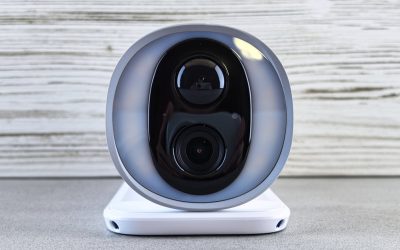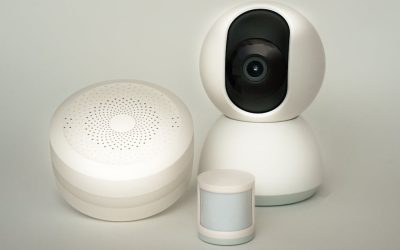Easy Intercom Installation: A Step-by-Step Guide
Intercom systems have become an integral part of modern home security and communication. These systems allow for seamless communication between different areas of a property, enhancing both convenience and safety. At their core, intercoms serve as a two-way communication device, enabling residents to speak with visitors at the door without having to physically open it.
This feature is particularly beneficial for families with children or elderly members, as it allows them to screen visitors before granting access to the home. Moreover, intercom systems have evolved significantly over the years. Traditional wired intercoms have given way to wireless models that offer greater flexibility and ease of installation.
Many contemporary intercoms come equipped with video capabilities, allowing homeowners to see who is at the door before engaging in conversation. This added layer of security is invaluable, especially in urban areas where crime rates may be higher. Additionally, some advanced intercom systems can be integrated with smart home technology, enabling users to control their intercom through smartphones or tablets, further enhancing their functionality. We take away the complications for the end user. They don’t have to think about what they have to do – We do the thinking for them.
Key Takeaways
- Intercom systems allow for convenient communication within a home or building
- Consider factors such as size, number of units, and desired features when choosing the right intercom system
- Prepare for installation by gathering necessary tools and materials, and planning the placement of intercom units
- Follow manufacturer instructions carefully when installing the intercom system to ensure proper functionality
- Connect the intercom system to a reliable power source and test for proper operation before use
Choosing the Right Intercom for Your Home
Selecting the appropriate intercom system for your home involves careful consideration of various factors. First and foremost, you need to assess your specific needs. For instance, if you live in a multi-story house, a system that allows communication between different floors would be essential.
Conversely, if you reside in a smaller apartment, a simpler model may suffice. It’s also important to consider the number of entry points you want to monitor; some systems can support multiple stations, allowing for communication from various locations within the home. Another critical aspect to consider is the type of intercom system that best suits your lifestyle.
Wired intercoms tend to offer more reliability and sound quality but require professional installation and can be more expensive. On the other hand, wireless intercoms are easier to install and can be moved around as needed, making them a popular choice for many homeowners. Additionally, if you are interested in video capabilities, look for systems that offer high-definition video quality and night vision features.
Ultimately, the right choice will depend on your budget, preferences, and the specific requirements of your living space.
Preparing for Installation
Once you have chosen the ideal intercom system for your home, the next step is preparing for installation. This phase is crucial as it sets the foundation for a successful setup. Begin by reviewing the installation manual provided by the manufacturer; this document will outline all necessary components and tools required for installation.
Familiarizing yourself with these details will help streamline the process and minimize potential hiccups. Additionally, it’s essential to determine the best locations for your intercom units. Consider placing the main unit near your front door or entryway for easy access when communicating with visitors.
If you have multiple rooms where communication is desired, plan accordingly to ensure that each unit is within reach of its intended user. Take measurements and mark locations on the wall where you intend to install the units. This preparation will not only save time during installation but also ensure that your intercom system is both functional and aesthetically pleasing.
Installing the Intercom System
With preparations complete, you can now proceed to install your intercom system. If you are working with a wired model, begin by running the necessary cables from the main unit to each of the secondary units. This step may require drilling holes in walls or ceilings, so be sure to use appropriate tools and take safety precautions.
For wireless systems, installation is typically more straightforward; simply mount the units in their designated locations according to the manufacturer’s instructions. As you install each unit, ensure that they are securely fastened and positioned correctly for optimal performance. Pay attention to any specific requirements outlined in the installation manual regarding distance from power sources or other electronic devices that may cause interference.
Once all units are installed, take a moment to double-check your work before moving on to the next phase of connecting power.
Connecting the Intercom to Power
Connecting your intercom system to power is a critical step that requires careful attention to detail. For wired systems, this typically involves connecting the power supply unit to an electrical outlet and ensuring that all wiring is properly secured and insulated. It’s essential to follow safety guidelines during this process; if you are unsure about handling electrical connections, it may be wise to consult a licensed electrician.
For wireless intercom systems, powering up is usually as simple as inserting batteries or plugging in an AC adapter. Ensure that all units are receiving power by checking indicator lights or displays on each unit. If your system includes video capabilities, make sure that any cameras are also powered correctly.
Once everything is connected and powered on, you can move on to testing the functionality of your new intercom system.
Testing the Intercom System

Testing your intercom system is an essential step in ensuring that everything is functioning as intended. Start by checking each unit individually; press the call button on one unit and listen for a response from others. This process will help confirm that all connections are secure and that communication is clear between units.
If your system includes video capabilities, test this feature by activating the camera and checking the video feed on your monitor or smartphone app. Additionally, it’s important to test any additional features your intercom may offer, such as door release functions or integration with smart home devices. Make sure that these features work seamlessly and that you understand how to operate them effectively.
If any issues arise during testing, take note of them so you can address them promptly.
Troubleshooting Common Installation Issues
Even with careful planning and execution, installation issues can sometimes arise when setting up an intercom system. One common problem is poor audio quality or static during conversations. This issue may stem from loose connections or interference from other electronic devices nearby.
To resolve this, check all wiring and connections for security and ensure that your intercom units are placed away from potential sources of interference. Another frequent issue involves connectivity problems with wireless systems. If one or more units are not communicating effectively, it may be due to distance from the main unit or obstacles blocking signals.
In such cases, try repositioning units closer together or removing any obstructions that may hinder communication. If problems persist despite troubleshooting efforts, consulting the manufacturer’s customer support can provide additional guidance.
Enjoying Your New Intercom System
After successfully installing and testing your intercom system, it’s time to enjoy its benefits fully. The convenience of being able to communicate effortlessly throughout your home cannot be overstated; whether you’re calling family members for dinner or screening visitors at the door, an intercom system enhances daily life significantly. Moreover, if your system includes video capabilities, you’ll appreciate the added security of being able to see who is at your door before opening it.
In addition to improving communication within your household, an intercom system can also enhance your home’s overall security profile. By allowing you to monitor entry points without having to physically approach them, you can maintain peace of mind knowing that you have control over who enters your home. As technology continues to advance, consider exploring additional features or integrations that may further enhance your intercom experience—such as connecting it with smart home devices or security cameras for a comprehensive security solution.
In conclusion, investing in an intercom system is a wise decision for any homeowner looking to improve communication and security within their property. By understanding how these systems work and following proper installation procedures, you can enjoy all the benefits they offer while ensuring a safe and connected living environment for you and your family.
When considering the installation of an intercom system, it’s essential to also evaluate the overall security framework of your property. A related article that can provide valuable insights is titled “Choosing the Right Commercial Security System: A Guide for Business Owners.” This resource offers guidance on selecting the most suitable security solutions for your business, ensuring that your intercom system integrates seamlessly with other security measures. You can read the article [here](https://alphasecuritycorp.com.au/choosing-the-right-commercial-security-system-a-guide-for-business-owners/).










